The best customer loyalty programmes and how to build one
When you’ve got a successful business going, whether on the high street or an eCommerce store, you might be inclined to simply keep going – and we wouldn’t blame you, because why fix something that isn’t broken? But there are so many reasons to think about the ways you can build the loyalty of your customers – and not just for building your profits. Keeping your customers engaged with your business can help them feel happier about their purchases, encourage them to recommend you to their friends and family and much more.
Today we’re looking at why customer loyalty is important, how you can build the loyalty of your customers. We’ll have a look at some of the best examples of customer loyalty programmes, before looking at what to consider when you’re building one for your business. We’ll round off with how to measure the success of your customer loyalty programme – because it needs to serve both you and your customers effectively.
Why building customer loyalty is important
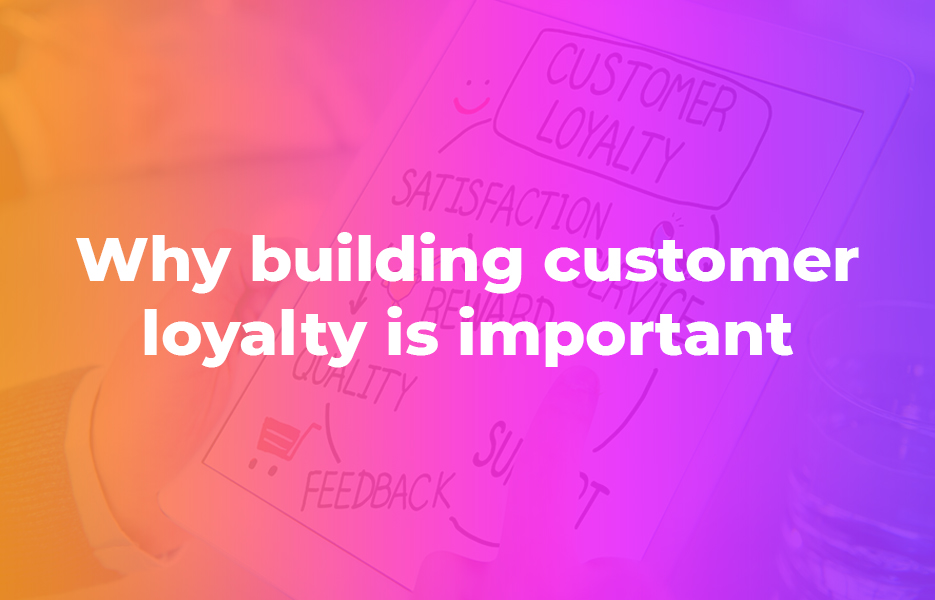
For many businesses – especially for those providing services, like mobile phone or broadband – it seems like there is an emphasis on recruiting new customers, with new customers being offered the best deals. If you’ve got an excellent marketing team and you can continue to build on finding new customers, then you might be happy to continue as you are.
But it really isn’t the most effective, or sustainable way to build your business – converting new customers into regular customers who stick with you for longer is. Here are a few statistics that you might already know, but are definitely worth reminding yourself of:
- Acquiring a new customer can cost up to five times more than retaining an existing customer.
- Increasing customer retention by just 5% can increase profits – from 25% right up to 95% or more.
- Selling to an existing customer has a success rate of 60 to 70%, whereas selling to a new customer the success rate can be as low as 5%.
- US companies lose around $137 billion each year due to customers switching to another business needlessly.
It’s pretty clear from these statistics (and we could find you plenty more like those!) that keeping a customer costs you less, and is more efficient than finding new ones. You’ll also increase your profits by increasing customer retention, but these aren’t the only reasons for creating a customer loyalty programme for your business. You’ll also see an increase in customer referrals – and good word of mouth is so valuable to businesses – as well as an increase in user-generated content on your social media and review websites as well as many other benefits, like additional data that you can work with to inform your business plan.
Building loyalty throughout the customer journey
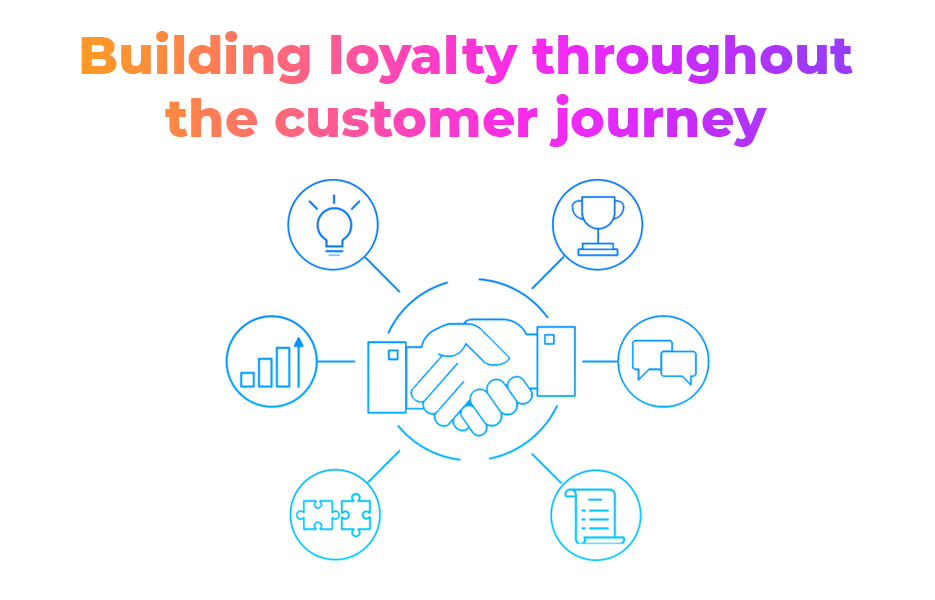
There are plenty of ways you can build customer loyalty – just offering the best price, 24/7 can be enough for some customers, which is why companies like Poundland and Primark are so successful. But offering the lowest price on absolutely everything cuts into your profits dramatically. To avoid taking your profits to razor thin, you’ll need to offer other benefits to your customers in order to keep them coming back to you, rather than going to your competitors.
Know your target customers
We’ve spoken about this several times on the blog now – but your target customer should not be ‘everybody’. Although in an ideal world your products will appeal to absolutely everybody, in reality they probably won’t. Doing research to create your target customers will help you market your products appropriately to the people who actually want them – which means they’re more likely to feel an affinity with your brand, to return to you for future purchases, and to become loyal.
Provide a personalised service
Once you’ve got more than a few customers, trying to provide a personalised service can be intimidating, but it doesn’t have to be – there are plenty of tools that can help you manage this with very little effort. By collecting information about them – such as their birthday, and the last time they made a purchase, makes customers feel valued. Sending them emails with their name in the header, and sending emails offering them a discount for their birthday (or other special dates such as Christmas or Thanksgiving) will help them to think more positively about your brand.
If there is news to share about your business, share those announcements with your existing customers first – so, if you’re launching an exciting new range, tell them and give them the chance to get 10% off the day before the range launches! Similarly, if you’re running behind due to factors outside your control (as many businesses have been due to COVID-19 recently!) then updating your existing customers first will help keep you in mind, and they will know if they are planning to order by a certain date, to allow a bit longer for delivery.
Be outstanding
Why do you love the brands you love? One thing we can guarantee about the brands you love is that they produce quality items, and (usually) do so at a price you can afford to pay. Businesses selling cheap, or poor quality items or brands that are slow to deliver often don’t make it onto lists of favourite brands. For you as a seller, that means getting the balance right between high quality goods at the right price while providing excellent customer service is utterly crucial.
Engage with customers outside of their purchase
Building a social media following is a great way to engage with your customers and increase the reach of your posts. But it’s not all one-way – many customers are keen to show their love for your brand, and social media is one of the best ways to allow this. Encourage your customers to tag you in their posts, to use your brand’s hashtag and so on – it all helps add up to increased loyalty.
Encourage feedback
We’ve mentioned this before – but for good reason. Customer reviews go a long way towards growing your new customers. If you’re providing outstanding products with excellent service, many of your existing customers will be happy – and so there’s no reason that you shouldn’t invite them to leave feedback on review websites. You can invite them via email, through your social media channels, and on your packing slips.
Psychological reasons that loyalty programmes work
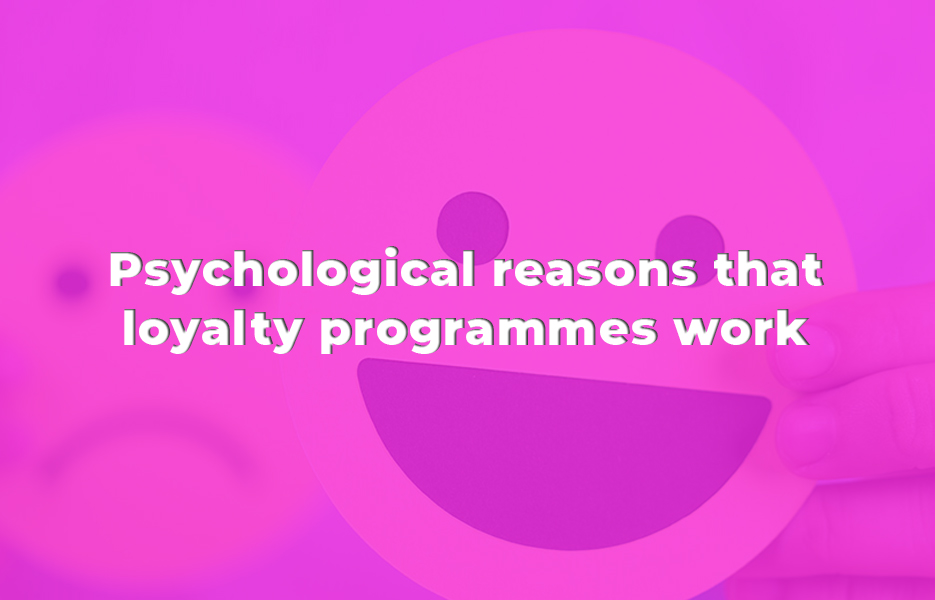
If you’re not thinking about customer psychology when you’re selling, you’re missing out on incredibly valuable information that can really help you build your business. You might think you know best – and if you’ve got a successful business going already, then you’re probably doing a bit of this stuff intuitively! But checking psychological research can give you that extra secret weapon in your arsenal, that gives you the edge over your competitors.
Positive reinforcement
You’ve probably heard of the classic study by Skinner, where he trained rats to receive a reward for the correct behaviour (and to get punished for negative behaviour). He found that positive reinforcement in conditioning would contribute to the likelihood of the behaviour being repeated. Since Skinner’s work in the 1930s, there has been countless studies that look at how positive reinforcement can be used in our daily lives, from children and animals through to consumer psychology.
Each and every loyalty programme builds on positive reinforcement. You’re literally rewarding the behaviour of your customers simply for shopping with you – which builds them to think positively about your brand, and to want to continue to do so.
Motivation
Your positive reinforcement is going to help keep customers returning, but some customers need a bit more. A loyalty scheme that encourages customers to collect points or other rewards will keep them coming back for more – and the closer they are to reaching a reward goal, the more purchases they are likely to make.
This applies in reverse too though – if the rewards are too hard to reach, or it will take too long to collect the number of points required, then customers will simply give up on the programme. Therefore providing goals that are easy to achieve (such as 10 coffees adding up to a free coffee) as well as bigger goals (like getting money back on purchases, or saving points towards a bigger, more coveted item) is important to keep your customers motivated. Not only that, you need to remind your customers of the points that they have already collected, how much they need to do to reach the next tier of membership and so on. Making updates and reminders timely and clear as to how much is left to do is important here.
Getting a head start
To encourage your customers to feel connected with the programme from the outset, offer them a head start on their rewards. It might not be a huge head start – but to use the coffee shop example, giving a bonus stamp on their card when they sign up for the scheme means they’re more likely to come back sooner, and to reach their goals. The key here is to help customers feel thanked for signing up. It costs you very little, but means that new customer is much more likely to come back – and sooner. To find out more about this phenomenon, search for the endowed progress effect.
Avoiding loss
When customers have already invested in a company, either with time or money, they don’t want to feel like they’re going to be missing out. You’ve probably heard of FOMO – Fear Of Missing Out. This is shorthand for a psychological phenomenon called loss aversion – where the pain of something being taken away is much bigger than the positive feelings of getting the same thing. Essentially, customers want to avoid loss more than they are motivated to earn.
To use loss aversion in building loyalty, put time limits on your special offers to make customers act more quickly. You do need to be careful in using this as a strategy though, as it won’t work for all customers – and you could even encourage some customers to give up on your programme. Be careful to do research before you implement this strategy – and definitely don’t use this strategy for all your communications with your customers.
Social status
Who wants to feel like they have a special status? Almost all of us, that’s who! Programmes that elevate customers to VIP status, or that allow customers to move up to different levels work incredibly well – and when used in conjunction with the loss aversion effect, it can be incredibly powerful. Once customers have achieved a certain status level, they are motivated to maintain that level of status – so adding different tiers of rewards can be a useful addition to your loyalty programme.
This even translates to points programmes where there are few rewards to be gained, such as on Reddit or Quora – which means your VIP customer rewards don’t need to be expensive.
Increased commitment
The more time and effort you put into something, the more likely you are to find it valuable, and we value our own work much more highly than we do that of others. So when you’re building your loyalty programme, finding ways for your customers to feel involved will mean they’re much more likely to value your company and your programme – because they become part of it. In turn, this will mean they’re more likely to buy more from you, at a higher price and more regularly. It doesn’t even need to cost your business a lot – simply being able to customise the colour scheme of your app, or being allowed to rate your products will evoke this effect.
What is a customer loyalty programme?

You’re probably aware of customer loyalty programmes simply from having visited your local high street. You’ll have been asked multiple times whether you’ve got a loyalty card whether you’re buying coffee, groceries, beauty products or even when you’re buying DIY equipment.
A customer loyalty programme is simply a scheme that rewards the customers that shop with them regularly. Rewards might be built by collecting points that lead to bigger rewards, such as money back on purchases, free items, discount coupons, and advance access to sales – or a combination of all of these. In the past, these schemes have relied on the customer having a card with them, but today, especially in eCommerce, it tends to be linked with the customer’s personal details that can be accessed on a database.
Examples of successful customer loyalty programmes
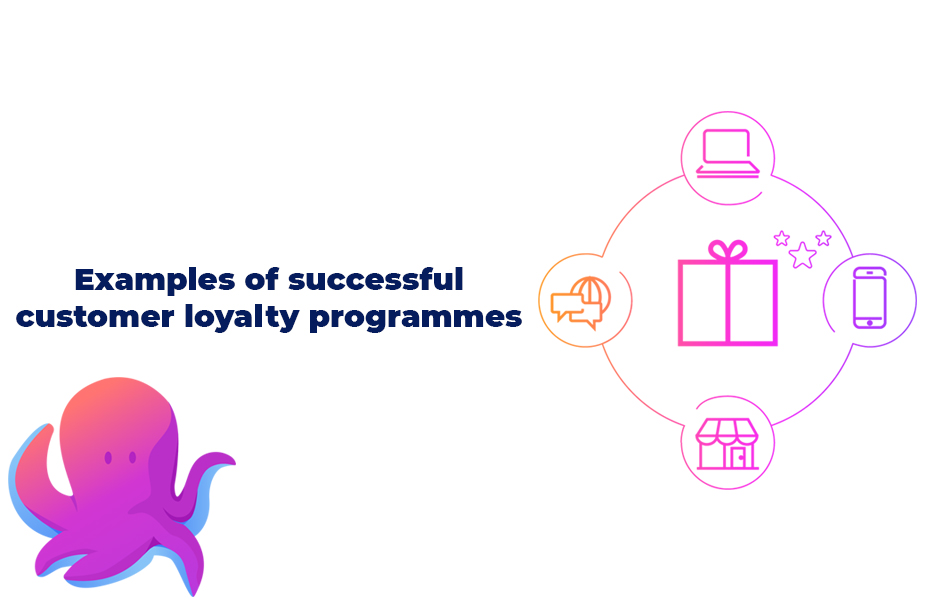
There are plenty of examples of successful customer loyalty programmes to be found, both on the high street and online. The best ones span both! Not all of the examples we look at here fit precisely into just one category, so if you’re planning to create your own loyalty programme, you might take elements of different schemes to grab the attention of your customers.
Paid programmes
Getting customers to pay to be loyal to your business is an incredible feat – and unless it’s a small, nominal setup fee, customers need to see huge value in order for them to invest. We’ve taken a look at the world’s biggest paid loyalty scheme here, to highlight exactly how much value is required to get customers to sign up.
Amazon Prime
You’re almost certain to know what Amazon Prime is, even if you’re not currently paying for it! Amazon Prime is a membership that Amazon charge you a small fee of £7.99 per month or £79 for the year. It’s not a customer loyalty programme exactly, as it doesn’t reward customers for each purchase, but it does provide more than enough incentive for customers to remain loyal once they’ve paid to sign up.
Amazon are actually reported to lose money on each Prime membership, but Prime members spend more than double on the marketplace each year compared to non-Prime customers – which undoubtedly means they’re making more than their money back on the programme.
Benefits that Amazon offer Prime membership include a host of free stuff, including:
- Unlimited free one-day delivery
- Prime Video – unlimited streaming of movies and TV episodes from the Prime catalogue
- Prime Photo – secure, unlimited photo storage
- Prime Music – an optimised music service that allows customers to stream music from their selection
- Prime Reading – which allows customers to borrow from the Kindle library and early access new titles
- Prime Wardrobe – a free service that allows customers to order clothes free of charge and pay once they’ve tried the items on
Considering that Netflix costs a minimum of £5.99 per month, and Spotify Premium is £9.99 per month, the benefits of Amazon’s Prime membership make it hard for many to resist – and not just for the free delivery.
Free programmes
There are probably more free loyalty programmes available than we could ever list in a blog post, but the best free ones offer customers something for doing absolutely nothing apart from shopping with the brand in the same way they usually do – but they keep customers coming back, in order to collect those loyalty points.
Starbucks Rewards
Starbucks offers UK customers access to their loyalty program via their app, or with a loyalty card. There are two levels of membership to the Starbucks loyalty programme – Green and Gold.
Once the customer is signed up, they’re immediately on the Green membership. That means every 15 times the customer uses their card, they can get a free drink. The app also allows customers to pre-load cash, so they’ll be able to pay for orders even if they’ve forgotten their wallet – and even better, they can order ahead, which means they can skip the queue.
To reach Gold membership, customers need to make 50 transactions on their card over 12 months. Once they’ve reached this level, customers can access extra free items every time they visit – like free syrups, extra shots of espresso, whipped cream and non-dairy alternatives. In order to keep receiving these benefits, customers need to collect 50 stars each year.
This programme makes a lot of sense to customers – the more times they visit, the more drinks they get for free. If they’re going to get coffee anyway, then it’s going to be worth it for most people.
This is, of course, where businesses can benefit – by being the preferred place customers get something functional, and rewarding them for it – just like our next example!
Boots Advantage Card
This is one of the simplest points collection programmes we know. Once you’ve signed up, every time you shop with Boots, you get 4 points for each £1 you spend. Every point is worth a penny, so if you want to buy something for £5.00, you’ll need 500 points. Easy, right? All customers need to do is get their card swiped at the checkout when they’re making a purchase, or sign into the website when they’re buying online.
Boots sometimes offer double points, or run specific offers for customers, offering the chance to get special prices or more points. There’s an app to increase the amount of offers that customers can access, and customers can collect points on their online purchases too.
Charitable programmes
Appealing to the philanthropic side of your customer can be a great way to encourage loyalty – especially where it takes no effort at all to donate to a charity. These next three examples aren’t just charitable programmes, but they do enable customers to do good with their loyalty, and from their purchases.
Love Your Body Club (The Body Shop)
The Love Your Body Club is the customer loyalty programme for The Body Shop. It’s a programme where customers can earn 10 points for every £1 they spend in store, which equate to 10p. When they have earnt 500 points, they get a £5 voucher. Like Boots, there are special events when points earnings are doubled, and other promotions are run, like competitions to win points by leaving reviews. When customers have shared their date of birth with The Body Shop, they also receive a £5 reward – simply for being a member.
The philanthropic element comes in because customers are allowed to choose to donate their rewards to a choice of charities that The Body Shop has set up connections to. At the time of writing, The Body Shop customers could choose to donate their points to NO MORE, a charity supporting victims of domestic violence and sexual assault; The World Land Trust; The Australian Red Cross and WIRES, a wildlife rescue charity that helps to support animal victims of the Australian wildfires.
TOMS One for One
Not your typical customer rewards programme, but TOMS appeals to the philanthropic side of their customers. Initially set up to donate a pair of shoes to a child in need for every pair sold, TOMS has grown their charitable giving into an incredible endeavour. To date, they’ve given over 95 million pairs of shoes – simply from customers buying pairs for themselves. They’ve expanded into sunglasses, and those purchases have translated into sight being saved worldwide. Today, for every £3 of their net profits, they give £1 away – talk about a way to feel good about your purchases.
The Co-op Membership
A bit like The Body Shop, The Co-op Membership is a double-whammy of earning as well as doing good for the community. It costs customers just £1 to join the scheme, and there’s a few reasons to join the scheme.
Customers earn 5% of what they spend on Co-op branded items from Co-op stores. This is saved in their account, which they can spend on other shops, on Co-op legal advice, or on services or items from Co-op Funeralcare. This is a great deal – since customers are likely to spend on items at Co-op stores anyway (most of us need a loaf of bread or a pint of milk at some point!). These savings add up, and some customers report saving their 5% for a special occasion such as birthdays or Christmas, or just for a rainy day.
Not only do they get 5% back to themselves, Co-op also donate 1% of what customers spend to community projects in the local area. Members of the Co-op can choose which local cause they want their 1% charity donation to go to each year – allowing charity to really begin at home. And just like with The Body Shop, Co-op members can donate their 5% that they earn – meaning they’re able to make a sizeable donation to charity with absolutely no extra effort.
In addition to this valuable incentive, customers who join the programme can access a share of profits if the Co-op performs well, and they have the right to vote on decisions about how the business operates. Those customers who really value their local Co-op really can be involved in the future of the business.
Gamification programmes
Gamification is a technique used by marketing professionals to keep customers hooked by making them feel engaged in a game – which means they’re more likely to ‘play’ for longer. A loyalty program that uses gamification provides feedback, or rewards when they reach a certain number of points, levels or progress.
Nike Membership
When customers become Nike Members, they get early access to new and members-only products, free delivery and birthday rewards. Sounds pretty standard for a loyalty programme, doesn’t it? On top of getting all this, there’s also access to expert advice, but here’s the unique nature of Nike Membership. They get rewarded for being active – and there’s four apps that can help keep customers hooked – Nike Store, the Nike Run Club, the Nike Training Club (full of workouts to follow) and Sneakrs, that allows customers to get access to their newest designs first.
As a sports brand, it’s in Nike’s interest to get their customers moving – the more their customers move, the sooner they’ll need to replace their sports gear – right? So they offer rewards through the apps for the customers working out and using the apps. Customers start to identify as a ‘Nike’ person. Nike also offer premium content on those apps; that is, that customers pay extra for – and they do!
The Nike Membership can be a win for customers as well as being a win for Nike themselves – since the customer is buying workout gear from Nike, they’re probably also in need of motivation sometimes. Earning rewards for each workout they do, from a brand they love can be just the incentive some people might need to get off the couch. And when they’ve lost weight, or they’ve worn out their trainers, which brand will they turn to? The one that helped them track their progress and to get fit, of course!
McDonald’s Monopoly
Not strictly a customer loyalty programme, but McDonald’s Monopoly is definitely a way to keep customers visiting more often throughout the promotion! Essentially, it works by customers collecting stickers that appear on the packaging for certain items, with three types of stickers available – Online Game Pieces, Property Game Pieces and Instant Win Game Pieces.
Online pieces and property pieces can be saved on the Monopoly website, and instant wins included free food – and if you’re already in McDonald’s, you’re probably a fan of their food… So this is a great incentive to keep customers coming back for more. On top of the food instant wins, there are a plethora of other prizes to be won, including cash prizes, cars, PS4s, shopping vouchers, phones and many more.
It’s a time-sensitive promotion though – it typically runs for just under six weeks. McDonald’s have run the promotion in different countries worldwide since 1987 – which is possibly one of the longest running promotions by a fast-food outlet ever.
Subscription programmes
Subscriptions and clubs are nothing new, but today’s subscription services are much more than the likes of the wine clubs and magazine subscriptions of the past. There are subscription services for plenty of different types of products – from cosmetics to pyjamas to books – and customers love them. Whether they’re sent weekly, monthly, quarterly or within a different time-frame, they’re a little treat that are affordable, or can be given as a gift that keeps on giving.
Glossybox
It might not be the first mainstream beauty subscription box, (that honour goes to Birchbox) but it was the first beauty box to include full sized products alongside miniature and sample sized beauty products. Members pay a monthly fee starting at £8.50, and receive five products in each box. Like with other companies, Glossybox subscribers are also offered other deals and discounts from brand partners through flyers in each monthly box – such as discount codes for cosmetics, homewares and fashion – and also through the ‘Glossy Lounge’ when they log into their account.
But here’s what makes Glossybox really worth the subscription: when users have tried their products, they can log into their account, and complete surveys and leave reviews for the products in their box each month. Each survey and review written earns subscribers credit that they can spend on brand partner website Lookfantastic. Surveys typically earn subscribers anything from 25p to 75p, but those credits add up – and can be a way for customers to be able to save for more expensive items such as perfume, premium makeup brands such as MAC or even electrical items such as GHD styling tools.
Clearly, the team at Glossybox (and the team at The Hut Group) are able to make use of the information contained in those surveys and reviews, but being able to earn a minimum of £1.50 back each month (it’s typically more than £1.50 though) by completing the surveys is a big incentive.
If it sounds like I’m a big fan of the Glossybox – you’d be right! In the year and a half or so that I’ve been a subscriber, I’ve earnt around £40 for completing 110 surveys. On top of getting a little treat through the post each month, by taking just 10 minutes to complete the surveys I’ve been able to order items from Lookfantastic at absolutely no cost – and free is absolutely my favourite price!
Starting a customer loyalty programme
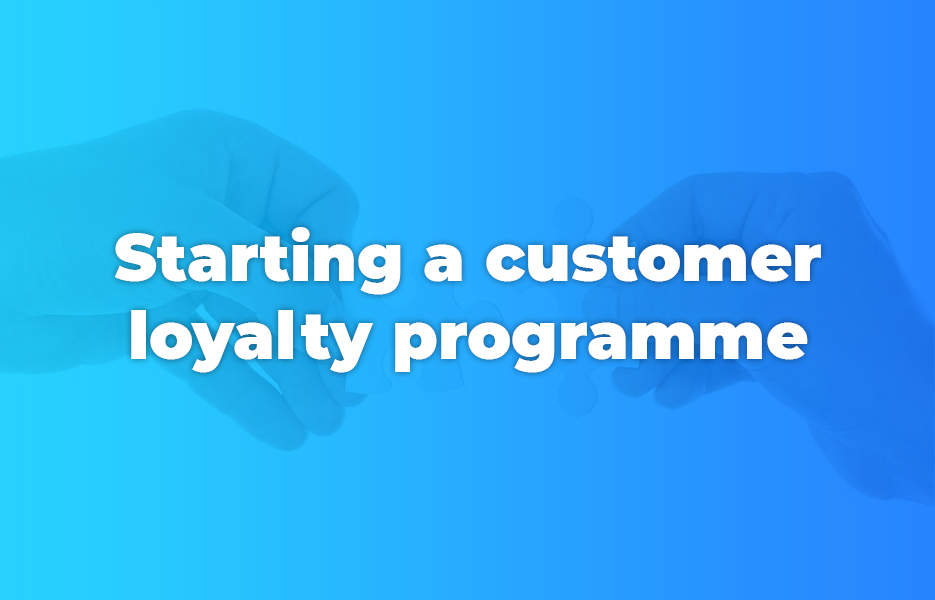
Decided that you’re going to add a loyalty programme for your business? We don’t blame you, it’s a great move. However, before you even get started, there’s a lot to think about.
Create a simple points system
The simpler, the better with this type of programme. When customers shop with a brand that is offering them some kind of incentive, they want to be able to find out what you’re earning, and how quickly they can access those rewards. Don’t make them have to do sums to try and figure out what they’ve earnt, and how they can earn more. The most successful customer loyalty programmes are successful simply because they’re so easy to understand. We spoke about these already, but the examples of Boots (4 points for every £1 spent) and The Body Shop (10 points for every £1 spent) are so popular because they’re so simple – and it’s easy to understand how to spend the rewards.
Points need to be valuable though – so just if you’re offering a measly 10% off voucher in exchange for 50,000 points and you only get one point for every £1 spent, customers won’t bother. Be realistic about what is worth it for your customers, and what your business can afford to offer if customers spend more.
Offer different levels of rewards – and not just points
Depending on what you sell, your customers might not be able to shop with you as often as they might like. In order to keep those customers engaged with your brand, consider offering exclusive competitions for customers who remain in your loyalty programme. If you’re selling the type of items that most customers won’t buy weekly or monthly, reward them for taking other actions. Can you offer them points for when they download your app, or sign up for your mailing list? What about if they follow you on different social media channels, or sharing your content? Think logically about what makes sense for your customers, and for your brand.
If some of your customers are able to spend more with you, then you might want to consider implementing different tiers of membership. By having different levels of membership to attain, customers can be encouraged to spend more.
Offer rewards customer actually want
Of course, earning points towards discounts on orders will see some customers shopping with you more often. But rewards have to be worth earning towards, otherwise customers will simply forget about your programme. Can you offer them a free gift with their order on or around their birthday? Consider offering them the chance to earn a desirable product, rather than points by interacting with your brand. It doesn’t need to be incredibly expensive – but choosing something that your target customer actually wants means they will be more likely to engage.
Consider charging a fee
Yes, it might be a deterrent for some customers. But like with membership for the Co-op, and Amazon Prime membership, if the value of the rewards are worth it, customers will be prepared to pay for it. And if they’re already paying for it, they’re less likely to make their purchases elsewhere, because they’re already invested by paying their fee.
Let’s use Amazon as an example. For those of us that pay for Prime, we’re likely to be using the benefits such as TV and music, which make it worth paying the subscription anyway. When it comes to making a purchase, Amazon is likely to be the first place we go to look for it, and prices have to be significantly cheaper elsewhere to make it worth our time. That’s partly because of the convenience that Amazon offers – preferred payment details and addresses are saved, and it’s just a couple of clicks to complete the purchase. But we’ve invested our cash in that Prime subscription – and the fact that shipping is likely to be free (assuming the item we’re ordering is available with Prime) means we want to get our money’s worth from our Prime subscription. Which is funny, considering we already know it’s worth having the subscription for the other benefits – but since we’re paying for Prime, it makes it not worth going elsewhere.
This is an extreme example, and not many retailers are likely to be able to charge £79 per year for a loyalty programme – Amazon are able to make it work because they’re offering so many extras with Prime subscription.
We see the same effect with Boohoo too though – when they implemented Boohoo Premier in the second half of 2017, the number of orders rose by a third. But here’s the thing – Boohoo Premier only covers shipping, and there are no other benefits. It’s a simple £9.99 charge per year that covers unlimited next day delivery for twelve months, and the cost of returns. Many businesses factor this in with the cost of their items, but by keeping prices of their items low and charging less than £10 for shipping, they’re increasing the customer’s investment in their brand, and they’re seeing more orders (and conversions) because of it.
Create partnerships
There’s a reason that businesses create partnerships – it’s to benefit both businesses, but also to benefit their customers. Take Glossybox as an example. They’re already providing a great deal with their monthly subscription box, since most of the boxes are worth up to five times the price of the subscription. But by partnering with Lookfantastic to offer credits that can go towards additional purchases, they’re increasing the appeal of the boxes to customers, because psychologically, they feel like they’re getting something for nothing. Add to that the deals available with partners on the website, and all in all, Glossybox really does hold a significant amount of value, for a seemingly small amount of money each month.
Create a memorable name
Amazon Prime. Boots Advantage Card. Tesco Clubcard. They’re the big ones that we all know (and love!). But consider some of these:
VIPeak – The North Face’s customer loyalty programme
The Nordy Club – Nordstrom’s rewards scheme
Beyond+ – Bed Bath & Beyond’s loyalty programme
Beauty Insider – Sephora
Ultamate Rewards – Ulta
Sparks – The Marks and Spencer loyalty scheme
Most of the names for these schemes have connections with the brand’s name, which help to make it memorable. Marks and Spencer has long been known amongst customers as Marks and Sparks, so it was logical to use Sparks as the name for their loyalty programme when it launched in October 2015.
The two exceptions to this are the programmes for The North Face and for Sephora, but those names both play on what their customers are interested in. The North Face is a brand that provides outdoor equipment, and so linking the name of their loyalty scheme with something their customers are already interested in can help keep them engaged. The same applies for Sephora – they sell beauty products, cosmetics and fragrance, so by implying that members of their loyalty programme will get inside information, or advance knowledge, they’re appealing to the interest of their customers.
Keep your customers’ values in mind
Refer back to your target customer research. What sort of person are you selling to? Whether ethical considerations are high on their personal agenda or not, most people want to be able to do good – especially if they can do so with little to no extra effort. Your customers might be happy to forego earning of points on your customer loyalty programme in favour of their purchases contributing to a good cause.
Think about what you’re selling, and what is likely to matter to your customers. Carry out research – talk to your customers on your social media, and email existing customers to find out if they already donate to charity, or what causes they care about. If you can appeal to them, you’ll have a much better chance of getting them to engage with a philanthropic loyalty scheme.
Implementing your scheme
If you’re not in a position to work with a developer at this point, then look at how your website is built – the app stores for website builders are full of apps that can provide the sort of loyalty schemes that you want to implement. On the Shopify App Store, there are 250 apps when we search for ‘loyalty’, 343 in the Magento Marketplace and there are plenty of options for WooCommerce, including the WooCommerce Points and Rewards, that was developed by WooCommerce themselves. Start simple, and you’re bound to see the returns you’re looking for.
Measuring the success of customer loyalty programmes
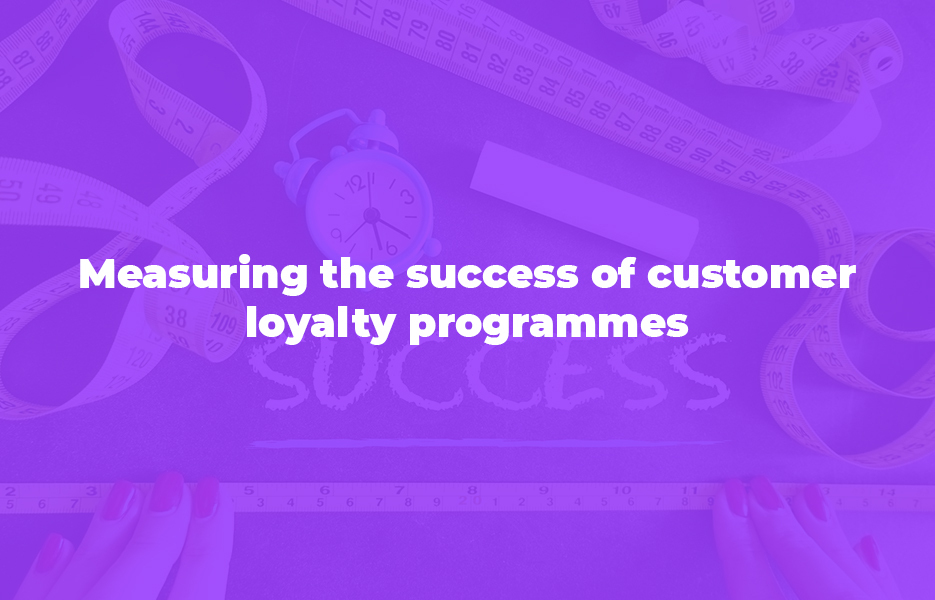
Although you’ll probably be able to see the effectiveness of your loyalty programme pretty soon after you implement it – especially if you’re inviting customers to sign up from your social media followers. But signing up isn’t all that you need them to do – it’s about how your customers next engage with you. These aren’t the only metrics you can use – you’ll need to establish what you want to achieve, and find the right measurements for your business.
Customer retention rate
This measurement simply shows how long your customers stay with your programme. If your loyalty programme is successful, this number should increase over time, as more people join.
Repeat purchase rate
This metric is easily found from your sales figures anyway, but assessing your repeat purchase rate once you’ve launched your customer loyalty programme can help you to establish how much your customers are invested. If you find your RPR is low, then you can refine your loyalty strategy – using incentives or email campaigns for example.
Redemption rate
How many of your customers have used their rewards – either by cashing in on point systems or free offers? This figure should be above 25% ideally – so that you know your customers are interested in the rewards. If the redemption rate is low, you can consider adding more opportunities to redeem their points, or to collect and use offers.
Net promoter score
This is a way to measure the satisfaction of your customers. It measures on a scale of 1 to 10 how likely your customers would be to recommend your company to their friends and family. The score is calculated by subtracting the percentage of detractors (customers who would not recommend your product) from the percentage of promoters (customers who would recommend you). Of course, the fewer people who are detractors, the better for your company.
Over time, your net promoter score should improve since your customers should become more loyal. It is a good idea to measure your net promoter score before you implement your customer loyalty programme, and then periodically after you have implemented it.
Implementing a customer loyalty programme can be incredibly lucrative for both you and your customers, but you need to do so carefully. Your loyalty scheme should be relevant to your customers, and provide the sort of rewards that they want from such schemes.
- Set your loyalty scheme up in line with what your customers value from loyalty schemes
- Keep everything easy to understand – from how to collect points to how to spend them
- Consider adding a philanthropic element to your scheme
- Use partnerships to create additional value for your customers
- Measure the success of your programme using pre-decided metrics
Another way to add extra value for your business can be to extend your inventory. To add additional inventory without needing to invest in stock, look at DropShipping. It’s easy to implement DropShipping when you have access to the right technology and the right suppliers – and Avasam provides both, and automates your processes so that it is even easier to see the benefits. Sign up for your free account today to get started with no upfront payments required.

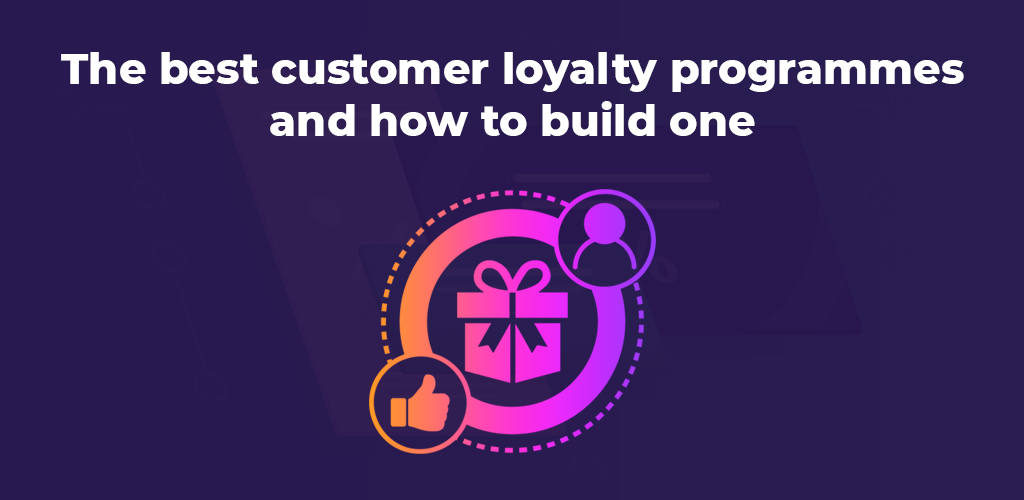






DropShip products from verified suppliers to diversify your inventory and scale your eCommerce business